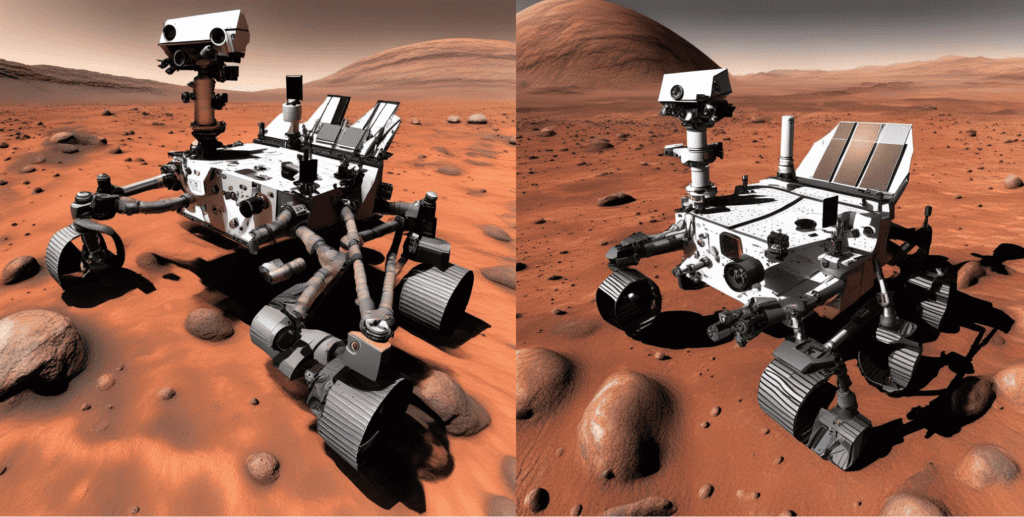Table of Contents
NASA’s MOXIE
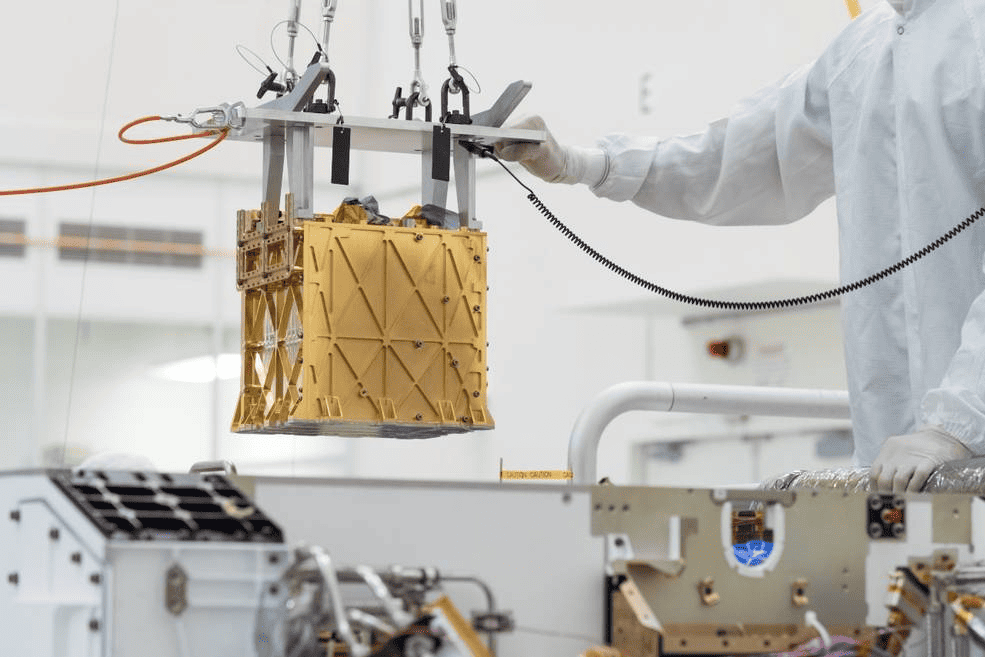
NASA’s MOXIE
In the 2020 Mars mission, NASA sent the ‘Perseverance’ rover to conduct various experiments to figure out if there was indeed life on Mars. It is also supposed to bring rock samples back to Earth for further research and analysis. The Mars Mission successfully landed on Mars in February 2021 and since then it conducted various experiments. In the rover, there is one instrument called ‘Mars Oxygen In-Situ Resource Utilization Experiment’ or MOXIE in short which is going to be remembered as human’s first step towards Mars Colonization.
NASA’s MOXIE is a joint initiative by NASA and MIT’s Haystack Observatory. NASA’s Jeff Mellstrom was the project manager of the program. Michael Hecht from Haystack Observatory was the principal investigator of NASA’s MOXIE program while former NASA astronaut – Jeffrey Hoffman was the deputy principal investigator.
NASA’s MOXIE is a derivative program of an earlier NASA experiment called ‘Mars In-situ propellant production Precursor’ or MIP short. It was conceived way back in the mid ’90s as an experiment to show the feasibility of creating oxygen from Mars’s atmospheric carbon dioxide. The project was indeed a success in the laboratory. It was supposed to fly in the Mars mission – ‘Surveyor’ – in 2001. However, due to the failure of ‘Mars Polar Lander Spacecraft’, the ‘Surveyor’ mission was canceled and the MIP program was abandoned.
Objectives and Results of NASA’s MOXIE

‘Jezero Crater’ MOXIE’s First O2 Producing Site
However, two and a half decades later, MIP’s successor, MOXIE, was able to conduct the experiment that MIP was supposed to carry out. The objective of NASA’s MOXIE was to produce at least 6-10 grams of 98% pure oxygen in each attempt by using carbon dioxide present in the Martian atmosphere. It is supposed to do this process 10 times minimum in various and diverse Martian weather and atmospheric conditions and in both Martian daytime and nighttime.
‘Perseverance’ rover landed on 18th February 2021 and just two months after landing, in April 2021, NASA’s MOXIE was able to produce breathable oxygen from the atmospheric CO2 of Mars in its first attempt. The first oxygen production took place in the ‘Jezero Crater’ on Mars. In the first attempt, NASA’s MOXIE was able to produce approximately 5.5 grams of oxygen. However, it was merely the test of the correct functioning of the equipment. After that, in the full year of 2021, NASA’s MOXIE ran 7 times. It is to be noted that 1 full year of Earth is equivalent to approximately 2 Martian years as Mars takes around 688 Earth days to orbit the Sun once.
During these 7 oxygen-producing experiments, MOXIE was put through various weather conditions during both the day and night time of Mars. The air density in the Martian atmosphere varies according to day or night and seasons. Since Mars has a thin atmosphere and because it is far away from the Sun, on average it has a much cooler temperature than the Earth. Also, its temperature varies greatly depending on daytime or night. During the day time, the temperature on Mars can go up to 20-25 degrees Celsius while at night time it can plummet to less than -100 degrees Celsius.
The elevated temperature during the day could release more gasses from the Martian soil. Also, relatively high temperatures would reduce the density of the Martian air. The colder night would have a different effect on the Martian atmosphere. The colder temperature would thicken the air molecules and would increase the air density.
The season shifts bring even more variety in the air composition and pressure. According to seasons, air pressure on Mars can vary up to 8% on both the up and down side. In warmer summer conditions, due to the relatively high temperature, the dry ice (Frozen carbon dioxide) turns into gas and gets released into the atmosphere. While, during the frozen winter season, 10%-20% of the carbon dioxide freezes and as a result, the atmospheric pressure decreases. Incidentally, NASA’s MOXIE was able to perform at optimal levels both in day and night time and also during varying seasonal times amid differentiated temperature and air density. This signifies the robustness of the machine.
After it was proven that NASA’s MOXIE could perform in varying Martian conditions, scientists at NASA decided to stretch the boundaries and see if it could perform in a stressed environment. So, in the next runs of MOXIE, it was put under stress, and even in those situations, it performed with overwhelming success. On 6th June 2023, on its 15th run, NASA’s MOXIE operated continuously for an hour and produced 98% pure oxygen at a rate of 12 grams/hour which is double the minimum expectation.
On 7th August 2023, it ran for the 16th and last time and achieved all its targets and functioning goals. Since April 2021, in a total of 16 attempts, NASA’s MOXIE has been able to produce 122 grams of 98% pure oxygen by using Martian Carbon dioxide. This much oxygen can sustain a small dog for 10 hours. The highest rate at which NASA’s MOXIE was able to generate oxygen was 12 grams per hour which is more than the maximum expectation (10 grams/hour) and twice the minimum expectation (6 grams per hour) of NASA.
Process of Producing Breathable Oxygen
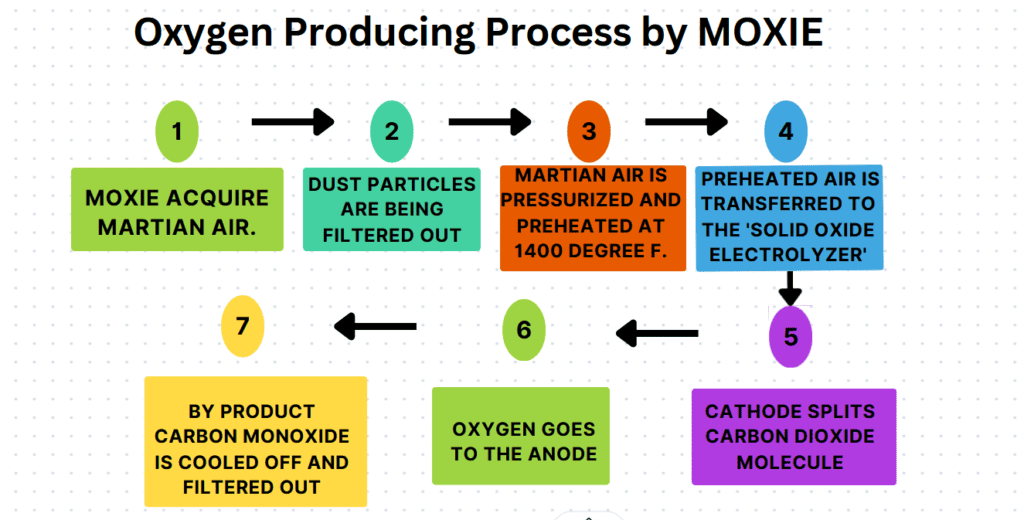
Process of Producing Breathable Oxygen by MOXIE
Before we explain how NASA’s MOXIE produces breathable and 98% pure oxygen, it would be helpful to remember the structure of carbon dioxide which is chemically represented by CO2. One carbon dioxide has one carbon molecule and two oxygen molecules. The carbon molecule, which has four electrons in its outer shell, bonds with two oxygen molecules which have six electrons in each of their outer shell. From these 6 electrons in outer shells, each oxygen molecule provides two electrons to bond with one carbon molecule. That’s how carbon dioxide is made with 1 carbon and 2 oxygen molecules and gets the chemical sign – CO2.
NASA’s MOXIE was able to separate oxygen molecules from CO2 by using ‘Solid Oxide Electrolyzer’ and produce carbon monoxide as a byproduct in the process. Solid Oxide Electrolyzer primarily consists of an anode, a cathode, and an electrolyte. In NASA’s MOXIE, a solid ceramic medium is used as a source of electrolyte. MOXIE acquires Martian air, through a filter, from Mars’s atmosphere which is almost 96% carbon dioxide. Only 0.14% of Martian air is oxygen. As the Martian air goes through the filtration, the dust particles are being removed from the air.
After taking in the Martian air, NASA’s MOXIE pressurized the air and preheated it to around 1400 degrees Fahrenheit. Then the air is transferred to the ‘Solid Oxide Electrolyzer’. It is to note that not all carbon dioxide that had been taken in, can be processed to produce oxygen as excess carbon dioxide would produce solid carbon waste which would clog the instrument and render it non-functional.
At the Cathode, which has a positive charge, the carbon dioxide is split. As the cathode has a positive charge, it is able to acquire electrons from oxygen-carbon-oxygen bonds that exist within the carbon dioxide molecule. The resultant oxygen goes to the anode and carbon monoxide (CO) is produced as a by-product. Then the carbon monoxide is cooled off and filtered before being let out into the Martian atmosphere. The filtration ensures that the composition of the Martian atmosphere is not altered by this human experimentation.
Scalability of NASA’s MOXIE
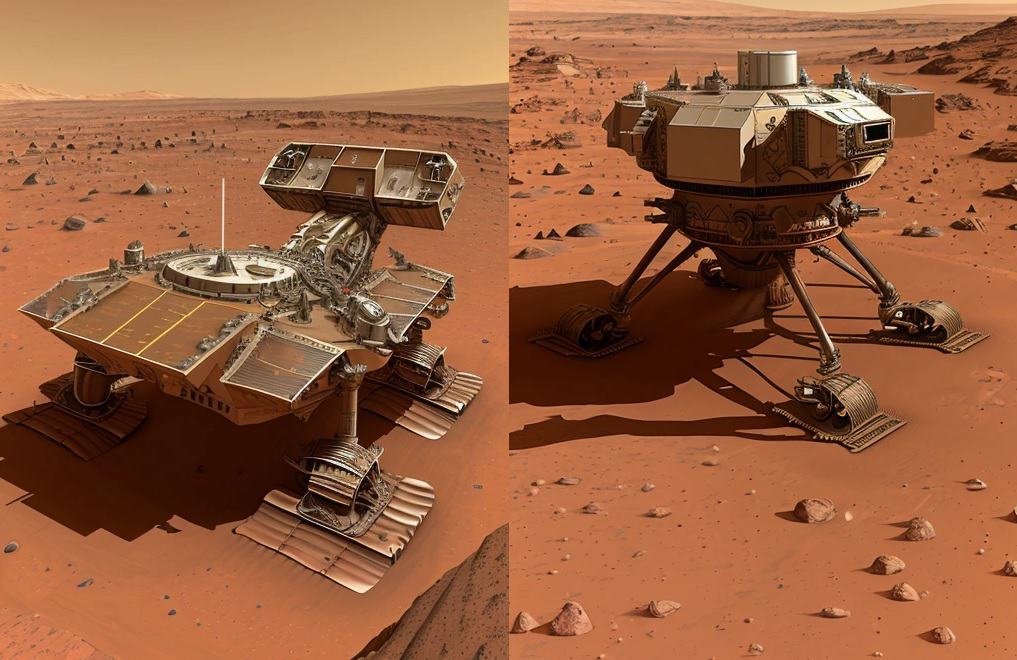
Illustration of MOXIE’S Scaled-up Version on Mars
A normal human in standard condition needs around 45-50 liters of oxygen per hour. Currently, NASA’s MOXIE can only produce 12 grams which is approximately 8-9 Liter of oxygen. So, it is clear that in order to sustain humans on Mars, the capabilities of NASA’s MOXIE have to be enhanced and expanded. The scalability of NASA’s MOXIE will be vital for the human Mars expedition and human colonies on the red planet. In the current scenario, MOXIE does not operate continuously.
For human colonies on Mars to be viable, MOXIE’s scaled-up and future versions would need to continuously function and produce oxygen at a high level of purity on a long-term basis. Also, it needs to be able to survive Mar’s daily and yearly variability of weather conditions, temperature, and atmospheric pressure. Till now, NASA’s MOXIE is able to perform at variable Martian conditions. But it had only worked occasionally and in short bursts for experimental purposes. Also, it had performed for little more than two years (One Martian year).
It is very much possible that current technological configurations need to be enhanced and upgraded for NASA’s MOXIE to work continuously and for the long term. Many new apparatus need to be added and many existing technologies may be discarded. Currently, it operates at a temperature of 1400 Degrees Fahrenheit. The high temperature may have different implications for MOXIE’s scaled-up versions. The scalability of MOXIE will also need to deal with vast amounts of dust particles which the equipment will need to filter out. Also, long working hours would produce new types of waste which the system needs to get rid of.
The future versions of NASA’s MOXIE will also need superior automation software and hardware systems which will have some A.I. components. They need to have self-correction mode and self-analysis mode so scientists and technicians can learn about them in detail. Also, there has to be back-up in place as if the system goes down, an alternative can take its place without delay of even 1 second as many precious lives will depend on it.
It will not be a bad idea to develop different technologies that could replace scaled-up MOXIE if such a need appears. Of course, any scaled-up or alternate versions of MOXIE will have to go through rigorous testing and experimenting on Earth and on Mars to establish the viability of the oxygen-producing technologies.
Human Habitation on Mars
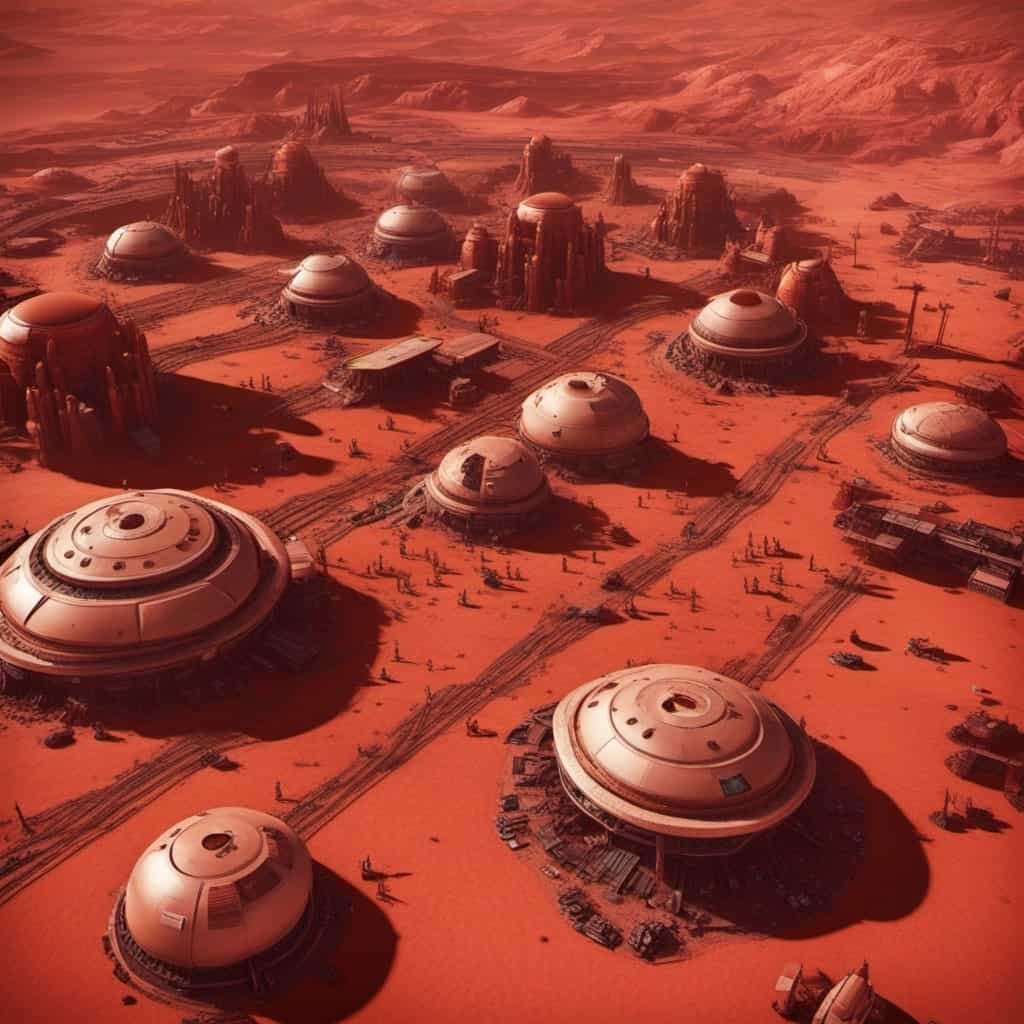
Illustration of Human Habitation on Mars
When Apollo 11 embarked on the Moon, it had to carry all the necessary oxygen with it – as breathable oxygen and as fuel. It successfully landed on the Lunar surface and came back to Earth. However, any human Mars mission will be different. Moon missions were carried out to show the technological capabilities of NASA. However, the Mars mission will be carried out to create human habitation on Mars. That will require frequent two-way trips and longer stays in the Martian environment. That is why carrying all the necessary oxygen is neither viable nor cost-effective.
So why there is a need to establish human habitation on Mars? The reasons are many. As it stands, Earth is the only planet, known to humanity, which can sustain life. There must be other planets in the galaxy, but we have yet to find them and even if we find them, they would be lightyears away from us, and even with the fastest rocket ship, it would take thousands of years for humans to reach that potentially habitable planet. Currently, we don’t have feasible technology to travel to such a distance.
In the near future, Earth could face some cataclysmic cosmic threats such as an asteroid or comet. Also, Earth is already facing some existential threats such as climate change, nuclear war, etc. due to human actions. Scientists have also discovered that life on Earth faces periodic extinction due to some yet unknown phenomenon. If Earth is destroyed, we humans will not be able to escape to some other place unless we make human habitation on Mars where we can travel in a short amount of time.
Also, Mars is rich with various minerals that could be mined for the colonists and could also be sent back to Earth. Eventually, we could transfer most of our pollution-generating industries outside Earth and to other celestial places such as Mars and the Moon. That way we will be able to reduce the strain on Earth’s resources and its environment. Mars, along with the Moon, also could become the prime destination for space tourism.
Mars is the nearest planet to Earth which is the outer circle of the goldilock zone around the Sun and in the past Mars did have liquid water on its surface. Also, Mars has many similarities with Earth. We also could travel to Mars in a relatively short amount of time and we also could make traveling to Mars affordable with the latest technologies. That is why it is essential for us to colonize Mars and NASA’s MOXIE will be key to that goal.
The Implications of NASA’s MOXIE
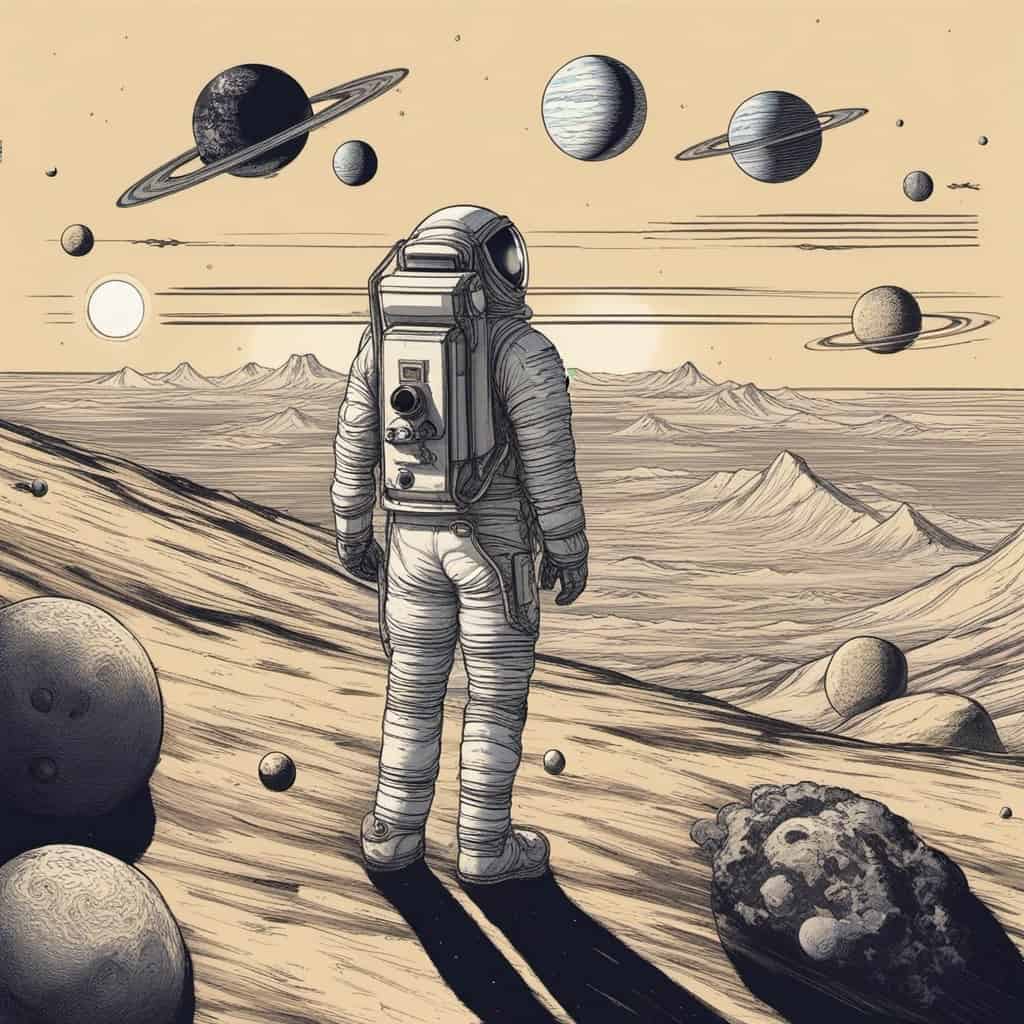
The Implications of NASA’s MOXIE
For human habitation on Mars, creating oxygen from the Martian environment is necessary and the success of NASA’s MOXIE is a big step towards the possibility of human habitation on the red planet. The success of NASA’s MOXIE will also pave the way for human exploration of Mars. Life on Earth can not survive without oxygen. Granted that at its current form, NASA’s MOXIE is not a viable option but a scaled-up and enhanced version of MOXIE can produce needed oxygen for human habitation.
The ability to produce oxygen on Mars will lower the cost of the Mars expedition as oxygen makes up for the bulk of the weight that launch vehicles need to carry. Oxygen is used not only for human breathing but also as fuel for the rocket. The ability to produce oxygen on Mars will make a two-way trip to Mars viable and cost-effective.
If we can produce oxygen on a large scale in Martian soil, the launch vehicles which will be set up from Earth, will need to carry oxygen fuel for an oneway trip only. For the trip back to Earth from Mars, the oxygen for fuel can be taken from Martian facilities. For this, scaled-up and enhanced versions of NASA’s MOXIE need to be fully automated which will be able to operate for months without any major human intervention. Its operating software and AI need to maintain their systems and carry out maintenance if needed.
It will have to account for the variability of Martian weather and Sol (solar day on Mars). The experimental version of NASA’s MOXIE is only about the size of a toaster and it weighs 15 kg on Earth and 6 kg on Martian surface. The scaled-up and enhanced version of NASA’s MOXIE will be much much bigger and will have many components. Those components have to be Martian weatherproof.
The bigger system will require perfect synchronization through software and AI systems. As astronauts arrive at Mars, they should be able to access the oxygen without any glitches or hiccups. Also, during their stay on Mars, the system needs to run perfectly. If by any chance, the system does malfunction, astronauts onboard must be able to fix it on time. For that, the astronauts will need to have a backup for oxygen generation.
Finally, NASA’s MOXIE represents a step towards Mars colonization, and it will in the future show the pathway to further expansion of the human race in the solar system and beyond.
Read More
- Lemons: 8 Astounding Facts About This Remarkable Super Fruit
- With Chandrayaan 3 Success, India Basks in Pride and Glory
- Top 5 Bitter Vegetables That Are Incredible For Our Health
- Grapefruit: 8 Incredible Facts About This Amazing and Tasty Superfruit
- Top 5 Amazing Properties of Time That Defy Common Sense
- Top 5 Important Citrus Fruits That You Should Know About
- 10 Factors for Emergence of Intelligent Life in The Universe
- Top 4 Important Vegetable Groups That You Should Be Aware Of
- Discoveries by JWST: 10 Incredible Findings of The Telescope
- Space Science: 6 Vital Reasons Why We Should Invest in It
- Solar System: 10 Astonishing Uniqueness of our star system
- Our Universe: An Incredible Journey of 13.7 Billion Years
- Indian Gooseberry (Amla): 10 Amazing Facts About This Wonder Fruit
- Top 6 Solar System Objects That Might Destroy Life On Earth
- The Great Physicist Peter Higgs Passes Away at 94
- Certain End of The Universe: 4 Forces of Nature to Watch Out For
- Big Bang: An Incredible Start of Universe 14 Billion Years Ago

